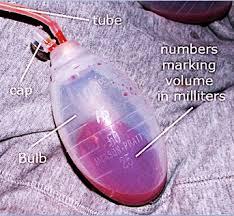Trauma surgeons frequently place some type of drain in their patients, whether it be a chest tube, a damage control system, or a bulb suction drain near the pancreas. On occasion, nursing may become concerned with the character of the output, wondering if the patient is bleeding significantly. How can you tell if the output is too bloody?

First, most drains are in place to drain serous fluid which may have a little blood in it. Drainage that is mostly bloody is very uncommon from these drains, which are typically placed after orthopedic, spine or abdominal surgery. However, some drains are placed in areas where unexpected bleeding may occur, such as:
- Damage control drain systems – as patients warm up, arterial sources that were not surgically controlled may open up
- Pericardial drains – more common in cardiac surgery, not trauma
- Chest tubes in patients with penetrating trauma
What should you do if you have concerns about your patient’s drain output?
- Familiarize yourself with what kind of drain it is and what it should be draining
- Look at the volume of output – it takes 500cc of pure blood to drop the patient’s hemoglobin by about 1 gram. Low outputs are not dangerous, even if it is pure blood.
- Look at the change in output– if it is increasing significantly or changes color, call the physician to evaluate.
- Look at the color of the output – most drainage ranges from clear to something like cranberry juice and appears to be partially transparent. Look carefully if it appears to be darker or more opaque, and compare it to the blood that you would see in a blood collection tube. Even the darkest drain output usually looks a little watery compared to whole blood. Bright red output needs to be evaluated by a physician.
- If in doubt, check the fluid’s hematocrit. Whole blood has a hematocrit of 30% or more. Most bloody-looking drain output maxes out at about 5%. If the value is closer to whole blood, have a physician evaluate the patient.



